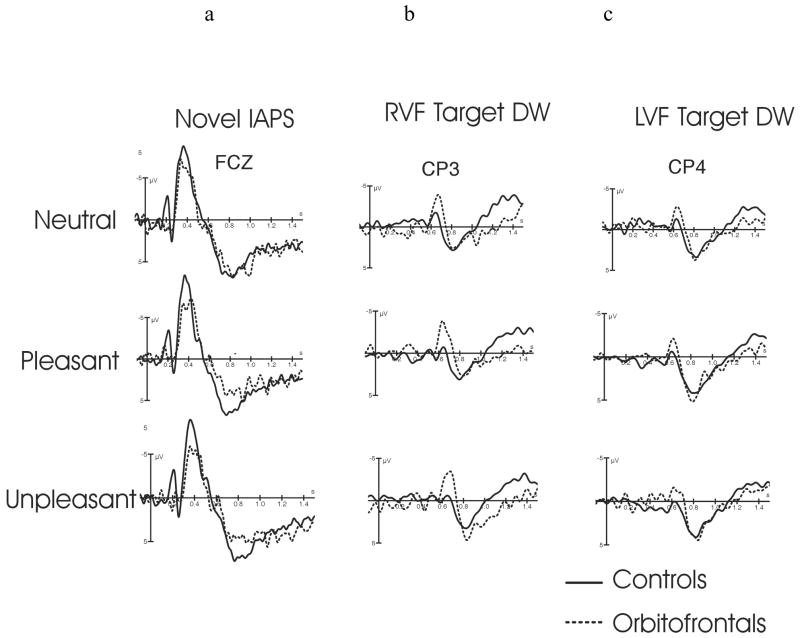Figure 5.
Modulatory effects of OF cortex on attention allocation. OF lesion had opposite effects on involuntary and voluntary attention allocation. Affective distracters (pleasant and unpleasant, a) evoked reduced N2-P3a amplitudes in orbitofrontal patients in comparison to controls. An opposite pattern was observed for the (b,c) target ERPs preceded by novel IAPS stimuli which showed enhanced N2-P3b potentials in orbitofrontal patients in comparison to controls. This pattern of ERP amplitude modulation suggests reduced attentional allocation to affective distractors and enhanced attentional allocation to target related processing in OF lesion. The ERPs to Targets are subtraction waveforms with preceding IAPS evoked potentials subtracted to reveal superimposed target evoked potentials as shown in Figure 2. Electrode locations for this figure were chosen according to the amplitude maximum with a) ERPs to novel distracters presented at a fronto-central electrode FCZ , while b) ERPs to RVF Targets are presented at a left centro-parietal electrode CP3 and c) LVF Targets at a right centro-parietal electrode CP4.

